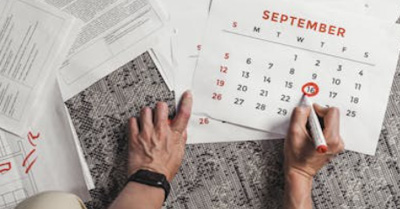Dates in American English (the Days) (Basic, A-Level)
Start from Page 1
Saying the days
Examples: Days only
When you speak, you sometimes say the day only because people understand that you are talking about the current month.
on the first
on the second
on the third
on the fourth
on the twenty-third
and so on…

SHVETS Production | Pexels
Examples: Days and months
You can include the month and the day to be clear. You may say “on the first of June,” but you would write “June 1.”
(In these examples, how you say it is in parentheses.)
on the first of June
on the second of March
on the fifteenth of October
on June 1
(on June first)
on March 2
(on March second)
on October 15
(on October fifteenth)
You can also include the day of the week.
on Sunday, June 1 (… June first)
on Monday, March 2 (… March second)
on Friday, October 15 (… October fifteenth)
Examples: Month Day, Year
To include everything, you are completely clear about the day you are talking about. (How you say it is in parentheses.)
on Wednesday, August 29, 1998
(on Wednesday, August twenty-ninth, nineteen ninety-eight)
on Tuesday, February 22, 2000
(on Tuesday, February twenty-second, two thousand)
on Sunday, June 1, 2025
(on Sunday, June first, twenty twenty-five)
on Monday, March 2, 2026
(on Monday, March second, twenty twenty-six)
Note
In some countries, they write “June 1st,” “October 3rd,” “December 24th,” and so on.
In American English, you write, for example, “June 1” and “October 3” but say “June first” and ”October third.”
MM/DD/YYYY format
How do you read 2/3/2022?
Remember that the format is [Month day, year] in the United States, so you know the month is February. That date is “February 3, 2022,” which you read ”February third, twenty-twenty-two.”
You can also use the last two digits of the year (e.g., 2/3/22). Only use that when the context makes it clear that the year is 2022, not 1922.
Practice
Back to page 1
Congratulations on completing this lesson!

Thanks to our supporters!
This material has been made possible by supporters like you. Learn how you can support us.

“What should I learn next?”
Learn fractions or use the navigation buttons to choose another lesson or skill.
Thank you for Supporting Snap Language
Snap Language supporters make the creation of these materials possible.
Learn how you can support our work, get perks, and help us continue creating high-quality materials.
You can support us by simply white-listing this site.